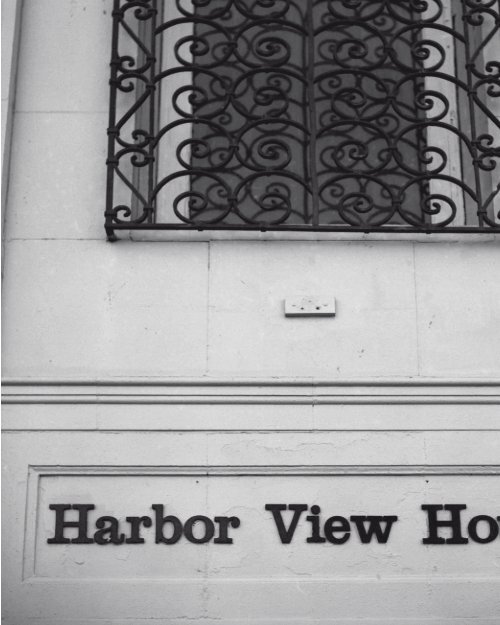Medicated for your Protection – Portraits of Mental Illness LIMITED ...
Medicated for your Protection – Portraits of Mental Illness LIMITED ...
Medicated for your Protection – Portraits of Mental Illness LIMITED ...
Create successful ePaper yourself
Turn your PDF publications into a flip-book with our unique Google optimized e-Paper software.
Harbor View House sits on a hilltop overlooking the bay in San Pedro,Cali<strong>for</strong>nia. Formerly a YMCA since 1919 <strong>for</strong> Army and Navy personneland longshoreman, it is now a Board & Care home to the indigent andchronically mentally ill adults. When I visited there one afternoon whileworking as a psychiatric social worker, I saw the anguished faces <strong>of</strong> theresidents, smoking cigarettes, bored and in need <strong>of</strong> something to do.Instantly I knew that this would be a worthwhile project <strong>for</strong> documentaryportraiture. My focus had always been on street photography and urbandecay. I wanted to challenge myself by taking portraits, and I was looking<strong>for</strong> a way to combine my skills as a clinical therapist and as a photographer.Despite their mental and physical deterioration, abandonment by friendsand family, and their pathology, my aim was to capture the subjects’humanity, dignity and any traces <strong>of</strong> normalcy. I was not trying to presentthem as “crazy”. I shot in a straight <strong>for</strong>ward manner without unusualangles, blurring, or other tricks to create a madness “effect”. I was lessinterested in photojournalism or in making a social statement about theconditions <strong>of</strong> institutional living. What I was after was to convey thesubject’s estrangement, isolation, and unique personality. With my theaterbackground, I found that each resident I photographed was like a characterin a play, with his or her own eccentricities, personal stories, desires, goals,inner life and outward presentation.I used 35mm and medium <strong>for</strong>mat film, shooting with a Canon AE-1,Mamiya RZ-67, and a twin-lens Rolleiflex from 1954. With the use <strong>of</strong> oldfilm cameras, I hoped to create a more naturalistic and gritty quality. I shoton weekends and nothing was pre-arranged. The residents understoodfully what I was doing, however their cooperation <strong>of</strong>ten depended ontheir mental and emotional stability that day. Most <strong>of</strong> them were friendly,helpful, eager to participate, and lacking in the usual self-consciousness andinhibitions <strong>of</strong> models and other “normal” or “sane” subjects. They nevercomposed themselves <strong>for</strong> the shot. They were just themselves - unaffected,raw, and honest. They let me know that they appreciated my attentionand the time I spent with them. I have included their biographical storiesso that they would have the opportunity to share their hopes, dreamsand desires. My goal is that these images and accompanying narrativeswill give a voice and a face to a small group <strong>of</strong> individuals who wouldotherwise go unnoticed. On a daily basis, they are faced with their ownpsychological and physical deterioration. Many <strong>of</strong> their mental disorders- Schizophrenia, Bipolar, and Major Depression - are life long, cannot becured but can be managed. I worked with a range <strong>of</strong> residents from theirtwenties to their sixties to further mark the progression and effects <strong>of</strong>mental illness through the years. In their personal narratives, some <strong>of</strong> thefacts and time-lines may not make sense due to their delusions, defects inmemory, or general confusion that is symptomatic <strong>of</strong> psychosis. What theybelieved to be true was more important. I recorded their statements at facevalue. Some <strong>of</strong> these individuals no longer reside in Harbor View House.1


